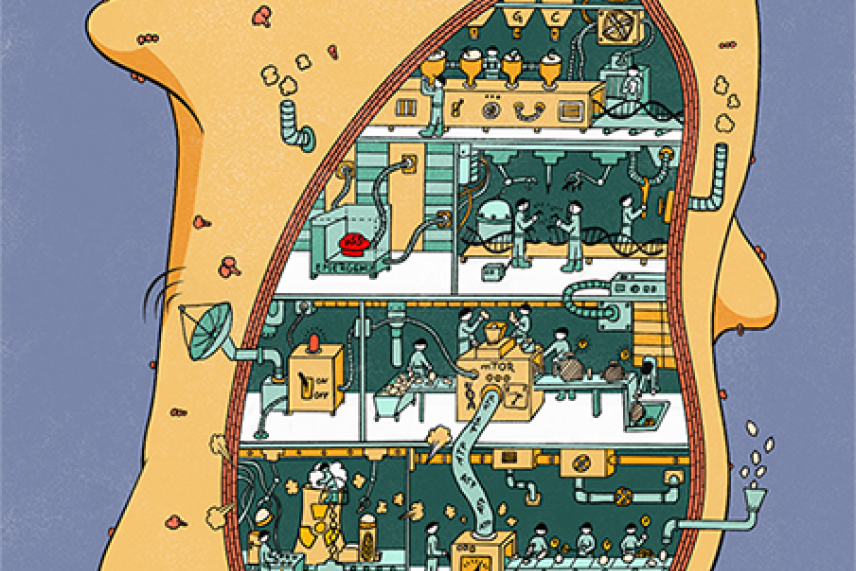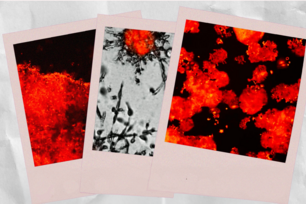Researchers chart global genetic interaction networks in human cancer cells

Using genome-wide CRISPR screens, Wang et al. identified clusters of genes that act together to carry diverse sets of biological processes that support cell survival and proliferation
Sigrid Knemeyer
Cambridge, MA, February 2, 2017— Cancer is a heterogeneous disease, with myriad distinct subtypes that differ in their genetic roots. As a result, cancers rely on varied pathways for survival—and respond differently to anticancer agents. The challenge for researchers is to precisely define those diverse pathways and pinpoint vulnerabilities that may serve as drug targets for new anti-cancer treatments.
Investigators at Whitehead Institute and the Broad Institute have taken an important step in tackling that challenge: They have succeeded in identifying the set of essential genes—those required for cellular proliferation and survival—in each of 14 human acute myeloid leukemia (AML) cell lines that had previously been characterized by genome sequencing. By combining their “gene essentiality map” with the existing genomic information, their study revealed liabilities in genetically defined subset of cancers that could be exploited for new therapies.
The report on their work, appearing in the online edition of Cell, is entitled, Gene Essentiality Profiling Reveals Gene Networks and Synthetic Lethal Interactions with Oncogenic Ras.
A major aspect of the study focuses on the genes and protein pathways connected to the Ras oncogene, the most commonly mutated oncogene in human cancers which plays a role in AML as well as many other cancers. “For the most part, the mutant Ras protein itself has been considered to be ‘undruggable’,” explain Tim Wang, the paper’s first author and an MIT graduate student researcher at Whitehead Institute and the Broad Institute. “An alternative approach has been to find other genes that Ras-mutant cancers rely on with the hope that one of them may be druggable. Unfortunately, such ‘Ras-synthetic-lethal‘ genes have been difficult to identify,” notes Wang.
Using CRISPR-based gene editing technique, the researchers could gauge the impact of individually knocking out each of the 18,000 protein-coding genes in the human genome. “This process rapidly enabled us to identify the short list of genes that were selectively required in only the Ras-mutant cells,” explained David Sabatini, a senior author on the paper, as well as a Member of the Whitehead Institute, Professor of Biology at MIT, and an investigator of the Howard Hughes Medical Institute. “We think this general approach can be applied to find vulnerabilities in many more cancer types.”
In addition to defining the Ras-specific gene essentiality network, the data generated from this study also allowed the researchers to decipher the molecule function of previously unstudied genes. They started by focusing in on genes that were essential in some of the cell lines but dispensable for others. For each of these genes, the researcher sifted through their data to find others that showed a matching pattern of essentiality with the idea that all of them had similar functions. Indeed, this ‘guilt-by-association’ analysis revealed gene groups that were already known to act together and uncovered novel associations between genes that were not known to be related or had been previously unstudied.
“What’s particularly exciting about this work is that we have just begun to scratch the surface with our method,” Wang concludes. “By applying it broadly, we could reveal a huge amount of information about the functional organization of human genes and their roles in many diseases.”
* * *
Tim Wang is a doctoral student at MIT, co-advised by Sabatini and Lander, and conducts research in the Sabatini lab at Whitehead Institute.
David Sabatini is a Member of Whitehead Institute, where he conducts his research, and a Professor of Biology at MIT.
Eric Lander is president and founding director of the Broad Institute of MIT and Harvard, a Professor of Biology at MIT, and a Professor of Systems Biology at Harvard Medical School
* * *
Citation
Wang, T., Yu, H., Hughes, N. W., Liu, B., Kendirli, A., Klein, K., ... & Sabatini, D. M. (2017). Gene essentiality profiling reveals gene networks and synthetic lethal interactions with oncogenic Ras. Cell, 168(5), 890-903.
Topics
Contact
Communications and Public Affairs
Phone: 617-452-4630
Email: newsroom@wi.mit.edu


